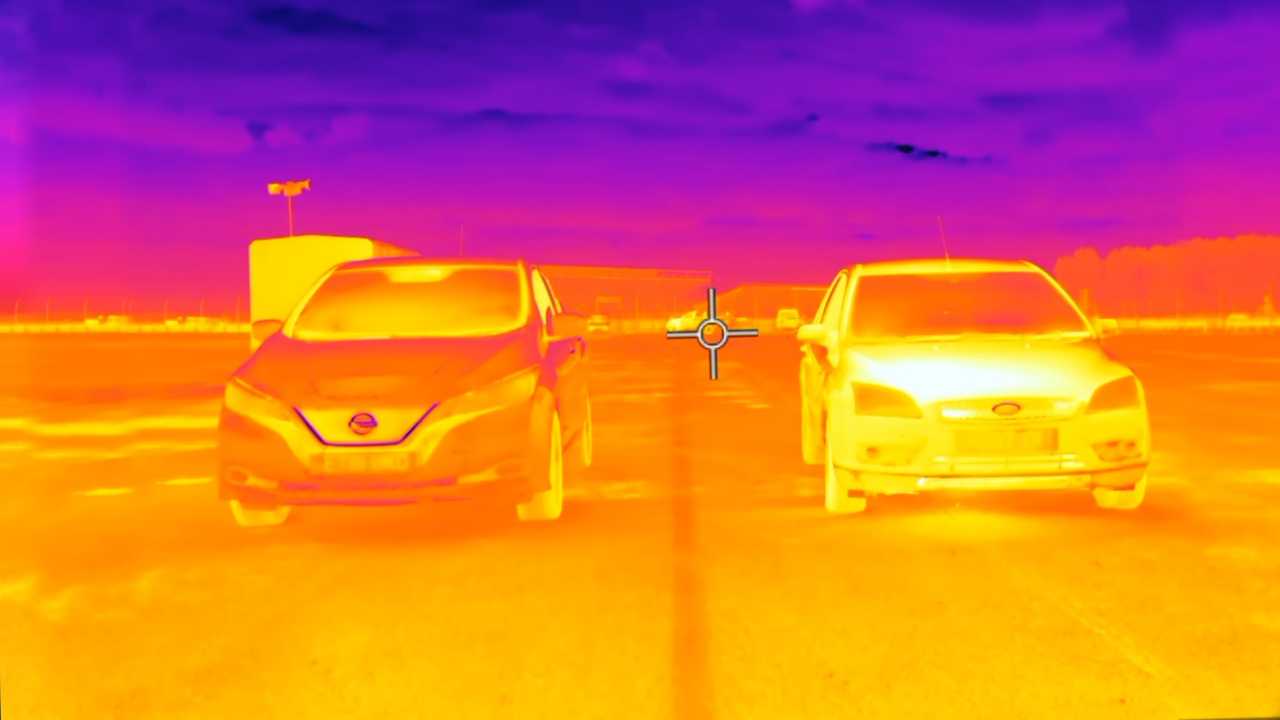Here we can literally see how inefficient internal combustion engine vehicles really are.
Fully Charged‘s Dr. Helen Czerski had the opportunity to film electric and internal combustion engine vehicles at the FC Live event earlier this year using FLIR T1K thermal camera, which allows us to see how much energy is wasted.
We already know that BEVs can be several times more efficient in terms of energy consumption per driving distance. This is because ICE generates mostly heat, while the motion is kind of a desired side effect of burning fuel.
The heat increases the temperature under the hood to pretty high values and is represented in the image from the thermal camera as a bright area – the lower the temperature, the darker the area.
A quick look at the Nissan LEAF and Ford Focus diesel shows a huge difference in temperature, which is a direct consequence of the high difference of heat losses:

Moreover, the EV and ICE look like a special mirror reflection, as EV is the hottest inside (it might be because of an opened window though), while the ICE is the opposite – the highest temperature is outside of the cabin, especially in the engine compartment.

Some of the EV heat losses come from the bottom – from the battery pack. There is also many other spots like electric motors, wheels, brakes, but for sure nothing comparable to an engine.

